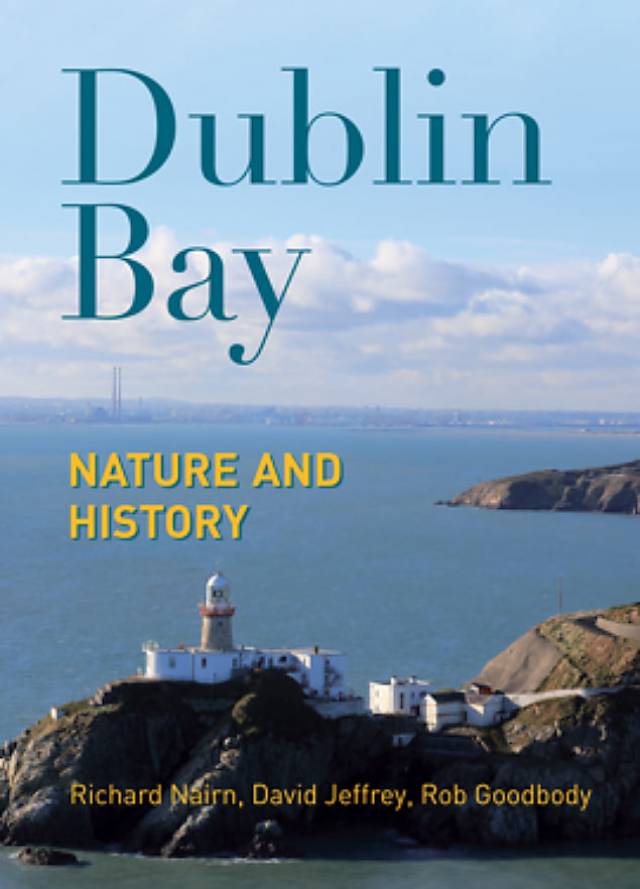Dublin City is extremely vulnerable to coastal flooding which could cost at least €340 million in insurance claims alone, according to a new book, Dublin Bay – Nature and History (The Collins Press, price €24.99). Richard Nairn, one of three authors of the book, said, ‘Rising sea levels, increasingly severe storms and poor flood defences will combine to cause frequent flooding of property in the coastal areas of Sandymount and Clontarf.’ He added that there needs to be a high level of cooperation between all state and local authorities to ensure that the capital city is protected from the worst effects of climate change.
Eamonn O’Reilly, Chief Executive of Dublin Port Company, said, ‘The challenge to simultaneously manage, develop and conserve Dublin Bay is formidable and requires an appreciation of both the bay’s natural environment and its built environment.’
Weaving the kindred strands of history and nature, the authors tell the fascinating story of the bay. The development of the port city has been mirrored by major changes in the coastal environment. Geographer and planner Rob Goodbody, said, ‘The human and natural components of the bay have learned to coexist and, in some cases, even to depend on each other. We wanted to show people things like how the creation of Dublin Port caused the formation of Bull Island, or how the cockles and mussels immortalised in “Molly Malone” caused typhoid fever throughout the city.’ Co-author David Jeffrey, added, ‘The bay has stretched its arms widely to embrace countless generations of Dubliners: it is a life support system, an economic asset and an invaluable recreational resource.’ This new look at a familiar seascape authoritatively explains its importance to the past, present and future of our city and country.
Richard Nairn is a writer and ecologist from Dublin. He studied Natural Sciences at Trinity College Dublin and was the first Director of BirdWatch Ireland. He provides ecological advice to local authorities, and supported the UNESCO Biosphere designation of Dublin Bay. An active sailor, he has also walked all the shores of the bay.
David Jeffrey, Emeritus Professor of Biology at Trinity College Dublin, lives in Howth. He was a key researcher on the Dublin Bay Water Quality Management Plan and is a tireless advocate for science-based nature conservation.
Rob Goodbody from Dublin is a geographer and planner. He has written several local histories and regularly leads historic walking tours in Dublin.
Did you know that the River Liffey was much wider and shallower in earlier millennia, before it was confined between the quay walls. At low tide, the mud would have been too soft to support a person’s weight and the only crossing was a wide shallow section of the river, with wicker mats staked to the riverbed, which came to be known by the Irish name of Átha Cliath, or ‘ford of the hurdles’. The name Dubhlinn means ‘black pool’, referring to deeper water where the River Poddle enters the Liffey estuary. Thus, the names of the city itself related to the bay.
Dublin Port, which occupies the mouth of the Liffey, is the gateway for three quarters of the trade entering and leaving Ireland. Six ferry companies operate up to seventeen sailings a day to the UK and over a hundred cruise ships visit each year.
Dublin Bay had the first designated bird sanctuary in Ireland and it now has more designations than any other place in the country. The latest of these is its recognition by UNESCO as a biosphere.
The initiative of Dublin City Council in 2015 to extend the UNESCO designation of Biosphere to the entire area of Dublin Bay and its hinterland was innovative, forward-thinking and a model for good international practice in coastal zone management. The Biosphere is managed through a partnership between three coastal local authorities, Dublin Port Company, Fáilte Ireland and the National Parks and Wildlife Service. This promising start should be the first building block in a development that could cast Ireland as a world leader. In ecological terms, the biosphere is the global ecological system integrating all living beings and their relationships, including their interaction with the physical environment.
Launched in 1971, the Man and the Biosphere Programme (MAB) is an Intergovernmental Scientific Programme that aims to establish a scientific basis for the improvement of relationships between people and their environments. Still in place over four decades later, MAB combines the natural and social sciences, economics and education to improve human livelihoods and the equitable sharing of benefits, and to safeguard natural and managed ecosystems, thus promoting innovative approaches to economic development that are socially and culturally appropriate, and environmentally sustainable.
Price €24.99 / £21.99 • Hardback • 312 pages and available to buy online from Afloat's Marketplace here
- The book will be Launched on Thursday, 2 November in Dublin Port Company. The guest speaker will be Senator David Norris. More launch details here.





























































